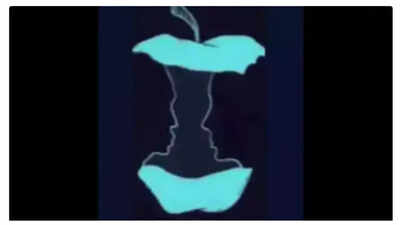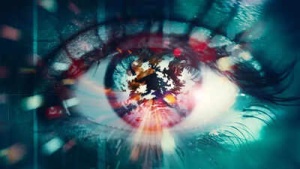Optical illusions continue to captivate audiences, offering both mental exercise and a fascinating glimpse into our perception. These visual puzzles challenge our observational skills and provide a unique form of entertainment. An optical illusion arises when our brain misinterprets the information our eyes send, leading us to perceive things differently from reality.

This particular image, shared by Marina Winberg, presents a classic dual-illusion: do you see an eaten apple or two faces? Your initial perception may reveal surprising insights into your personality. Take a moment to examine the image and discover what your first impression says about you.
Winberg explains that the image offers two distinct interpretations: "two faces (a man and a woman) looking at each other OR an apple core—what you notice first says a lot about your mindset!"
What do you see?
If you identified the two faces first:
According to Marina, spotting the faces suggests: "You’re a logical, analytical thinker with strong morals. You think before you act, value stability, and solve problems creatively— but sometimes, curiosity gets the best of you!”
If you saw the apple first:
Marina suggests that seeing the apple indicates: “You’re intuitive, emotionally aware, and great at reading subtle cues. You know the right thing to say, but often stay quiet. Stability matters to you, and you protect what’s important.”
Optical illusions are not merely visual tricks; they offer a window into how our brains process information.
There are primarily three categories of optical illusions:
Literal Illusions: These occur when the brain pieces together elements of an image to form something that isn't actually present. A common example is an image that can be seen as either two faces or a vase, depending on the viewer's interpretation.
Physiological Illusions: These illusions result from overstimulation of the visual system. Excessive exposure to light, movement, or color can lead to effects like afterimages or the perception of motion in a static image.
Cognitive Illusions: These illusions tap into our brain's subconscious interpretation of information. The Müller-Lyer illusion, where lines appear to be different lengths due to surrounding shapes, is a prime example.
Newer articles
Older articles
 ‘Ghar ki murgi daal barabar’: Virender Sehwag’s son recalls father’s humorous words – Watch
‘Ghar ki murgi daal barabar’: Virender Sehwag’s son recalls father’s humorous words – Watch
 5 essential insects that protect your plants and reduce garden pests
5 essential insects that protect your plants and reduce garden pests
 Rishabh Pant Redefining Cricket, Says Greg Chappell
Rishabh Pant Redefining Cricket, Says Greg Chappell
 Warning Signs: 5 Prediabetes Symptoms to Watch For (No Blood Test Needed)
Warning Signs: 5 Prediabetes Symptoms to Watch For (No Blood Test Needed)
 Bangladesh Coach Simmons to Temporarily Leave Sri Lanka Tour for Medical Check-up
Bangladesh Coach Simmons to Temporarily Leave Sri Lanka Tour for Medical Check-up
 Sanjog Gupta Named New ICC Chief Executive Officer, Set to Lead Global Cricket Expansion
Sanjog Gupta Named New ICC Chief Executive Officer, Set to Lead Global Cricket Expansion
 SA20 Auction: Teams Allowed to Retain Up to Six Players Amidst Purse Increase and New RTM Card Introduction
SA20 Auction: Teams Allowed to Retain Up to Six Players Amidst Purse Increase and New RTM Card Introduction
 Elon Musk's first Neuralink implant allows paralysis patient to play games and…
Elon Musk's first Neuralink implant allows paralysis patient to play games and…
 Tiêu đề: Brain's Eye View: Study Shows We Perceive Reality 15 Seconds Late
Tiêu đề: Brain's Eye View: Study Shows We Perceive Reality 15 Seconds Late
 Udaipur: Unveiling India's Romantic "City of Lakes and Palaces"
Udaipur: Unveiling India's Romantic "City of Lakes and Palaces"